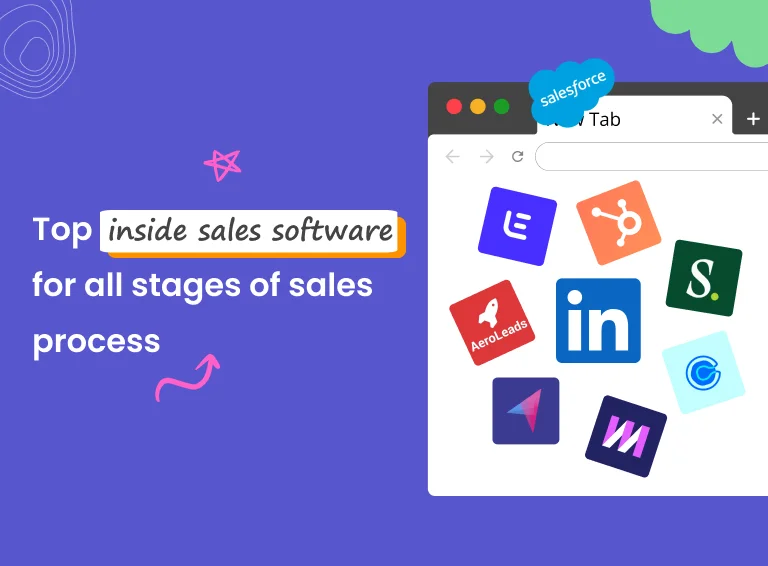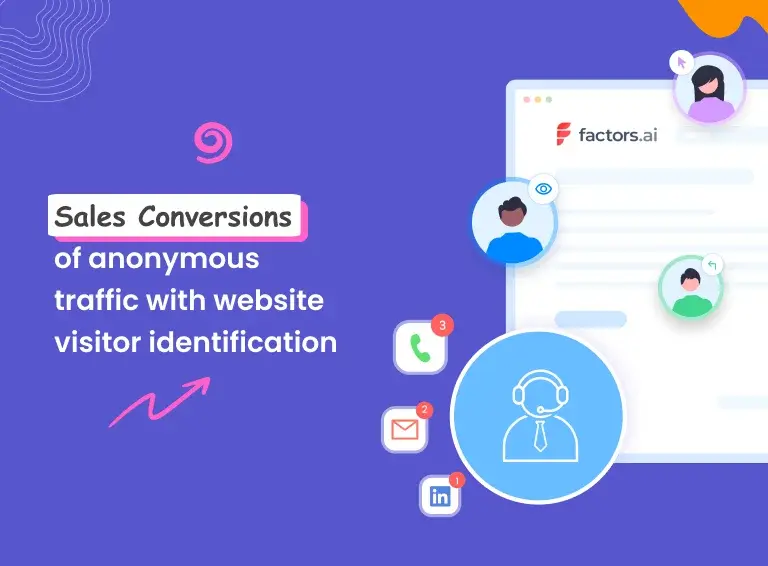As a retired FBI international crisis negotiator, Chris Voss knows a thing or two about negotiating. Unlike what’s shown in Hollywood, negotiating in a crisis isn’t about who is the loudest, or who gets pushed into the corner. It’s more like a regular conversation you might have with someone you meet on the street. Voss muses that we all want something from someone, and we’re always negotiating in real life. Of course, you win some, you lose some.
This blog takes a closer look at six concepts Chris Voss has developed over his career in the FBI, which salespeople can benefit from.
1. Tactical Empathy

According to Chris Voss, empathy goes a long way in putting someone at ease. It’s important your prospect feels heard and understood. This also gives you the opportunity to listen and make notes. You might think you know their pain point, and you may firmly believe in your value proposition. But, that’s not enough to close the deal. Over time, leading empathy creates the opportunity to form a relationship quickly. Instead of thinking of each other as opponents, the situation becomes the opponent, while you and your prospect become collaborators. As collaborators, it becomes easier to work towards a win-win situation, instead of you winning at their expense.
The tactical part is knowing when it might be detrimental to you closing the deal. If you're too empathetic, the prospect may take advantage of you. Or worse, you might conclude that the negotiation has hit a wall, and back off completely.
2. Downward and Upward Inflection
Inflection is the change of pitch in your tone of voice. It's important to know the difference between tone and volume. Shouting or whispering will get you nowhere in a negotiation. Or, any conversation for that matter.

Downward Inflection:
The downward inflection indicates a stern statement. It signals to the listener that you won't budge, and a dealbreaker has been reached. For example, “That's not possible.” with a downward inflection will get the point across without sounding like a threat. Tactical empathy combined with a downward inflection will keep your prospect from getting defensive. Instead, they will reassess their next response. At this moment, their intent will also become clear. If you get the feeling that they aren't too keen on the deal, you can then decide to end the conversation.
Upward Inflection:
The upward inflection conveys curiosity. It's similar to when you start a sentence and trail off hoping the other person will complete the rest for you (”Let's have the call at…?”). In a negotiation, the upward inflection triggers the prospect to subconsciously divulge information and intent, while feeling like they helped you get the facts right. The urge to correct someone is an undeniably human trait. You can test this theory by asking your colleague a simple question like "Your son's name is…?” with an upward inflection. Or, “Your son's name is Eric, right?”
3. Mirroring in Conversation

There’s a part of the brain that houses mirror neurons. These mirror neurons are responsible for reciprocation gestures like smiles and nods. When you flash a smile at someone, they will smile back at you. It’s a reflex. This can be replicated with words, whether you’re sitting across the table, or talking on a phone without a screen or camera. A quick smile or a warm gesture will trigger the mirror neurons and put your prospect at ease subconsciously. A good mood is vital for a good negotiation.
“You’re 31% smarter in a positive frame of mind.” – Chris Voss.
If you fail to ease the prospect into the negotiation, they may show their discomfort by responding negatively, or not responding at all. Avoid rushing the conversation. If the prospect feels like they’re being cornered or forced, they will feel attacked and perceive you as the aggressor. When someone feels like they’re in an uncomfortable conversation, they will try to end the conversation the first chance they get. This will also effectively end your relationship as collaborators, and any chances at conversations in the future will cease to exist.
Conversational mirroring involves repeating the last 2-3 words from the end of the sentence you just heard. For example, the prospect tells you, “We’d love to sign up. But, your product is a little outside our budget.” Now, using the mirroring technique, if you respond with “outside your budget?” the prospect will volunteer more information without hesitation. Mirroring is a great tool to seek out vital information without asking questions. In the same example as before, if you’d asked “What’s your budget? Let’s see if we can work something out”, you know they’d not answer directly.
While employing the mirroring technique, remember to never divulge any information from your side. This is not a friendly conversation where you relate to the other person. Think of it as a two-way mirror, where the person doesn’t know what’s beyond their own reflection.
4. Labels

Quite simply, a label is a question that starts with the phrases “it sounds like/seems like/looks like”. These questions serve as qualifiers of intent or circumstance and make your prospect feel like the center of attention. Much like mirroring, this technique also helps move the conversation along when you feel you’ve hit a wall. The combination of labels and mirrors can keep someone talking longer than they intended. They think it’s a conversation. But, only you know it’s a negotiation.
Let's use the same example from earlier about the budget. “It seems like you're on a tight budget” with a downward inflection, or “It seems like you're on a tight budget…?” with an upward inflection will prompt your counterpart to either confirm or deny your label.
5. The Power of No

Chris Voss swears by the “no-oriented questions” approach to negotiations. In this method, the goal is to get the prospect to say no, instead of trying to get a “Yes” right away. Saying no triggers a safe feeling, and a sense of agency. If either party can say no, neither one feels superior or inferior to the other. This lends itself to the negotiation starting on level ground. Every possible question that is designed to get a “Yes” can be flipped to a “no-oriented question”.
Here are the 4 types of no-oriented questions from Chris Voss:
- Have you given up on...?
- Is it ridiculous...?
- Would it be horrible...?
- Is it a bad idea...?
For example, “Have you got a few minutes to talk?” is a yes-oriented question, and the chances of getting a no and the conversation ending are high. This happens because the prospect has begun to fill their mind with questions like “How long is a few minutes?”, “what am I going to talk about?”, “Is this urgent or important?” and so on. When their mind is preoccupied with so many doubts, they have stopped listening to you.
But, “Is now a bad time to talk?” is a no-oriented question. The chances of your prospect replying with “No, it’s not.” are high. Even if they say, “Yes, it’s a bad time” they will follow it up with “But, I can talk on <insert date and time>”
Saying it’s not a bad time helps the prospect quickly focus on the conversation at hand. On the other hand, if the prospect says it is a bad time and does not give you a later date or time, moving on is the best decision you can make. Would you really like talking to someone who doesn’t want to talk to you? Now, that’s another no-oriented question right there!
6. Ask How, Not Why

Chris Voss suggests taking "Why” completely out of your vocabulary while negotiating. Why, triggers a defensive response in your prospect? Think about all the times somebody asked you a "why” question. It's a safe bet that most of those times were not cheerful conversations. "Why did you…?”, and "Why should I…?” come across as accusations. Accusations trigger emotional and sometimes irrational responses. If the prospect feels cornered, they will immediately shut down and stop contributing to the conversation. "Why” questions can easily turn any negotiation into a hostile interrogation. And, when you're responding to an accusation in the heat of the moment, you're not 31% smarter anymore.
"How” is an open-ended question, and encourages collaboration. Instead of "Why would I do that?”, try "How am I supposed to do that?” in a calm tone of voice. This will push the conversation forward, and the other person might even spell out exactly what they want you to do.
Ask how, and you shall proceed. Ask why, and they shall recede.
“60 Seconds or She Dies”
This is a fun roleplay exercise designed by Chris Voss to simulate a high-stakes hostage negotiation. One plays a bank robber, while the other plays the negotiator. The premise is simple: the bank robber is threatening to kill a hostage in 60 seconds if their demands aren't met. As the negotiator, your job is to keep the bank robber talking for more than 60 seconds, while collecting as much information as possible. Since it's a hypothetical situation, the aim of the game is to keep the conversation flowing, without agitating or pushing the bank robber into a corner. After each playthrough, the participants can quickly review their performance before switching characters.
Watch this exercise in action.
This is a great warm-up activity for salespeople, as it trains the mind to stay calm under pressure. Anticipating the prospect's questions or responses, while mining valuable information and calculating your next move can be overwhelming and tiresome. Instead, by leaning on your mirroring and labeling skills, you can focus on closing the deal without burnout.
Conclusion
Whether it's at work, at home, or in relationships, we're always unconsciously part of negotiations every day. Being more mindful and observant in everyday situations can prepare you better for closing the deal in your next call. Some of the concepts covered in this blog might have seemed obvious after a deeper look. Once it's obvious, it's important to hone your skills with patience. Remember to stay calm and maintain a neutral tone of voice, and deploy mirroring, labeling, or tactical empathy at will. Here's a label to end on: Is it a bad idea to share this article with your network?





